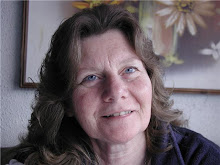by Jordon Rubin
Garden of Life Newsletter 2011
Each year we’re exposed to 2.5 billion pounds of toxic material that comes from our atmosphere, soil, water and food. Since the Industrial Revolution—which alone added about 80,000 toxic chemicals—and post-World War II petrochemical revolution, toxins have accumulated in the human system faster than they can be eliminated. Hence, toxic overload.
The fact is that our bodies carry around various industrial chemicals, pesticides, food additives, heavy metals (like lead) and anesthetics plus the residues of pharmaceuticals—to name a few. It’s no wonder, either. We’re exposed to chemicals in far greater concentrations than previous generations were. Over 69 million Americans live in areas that exceed smog standards; most drinking water contains over 700 chemicals, including excessive levels of lead; some 3,000 chemicals are added to the food supply, and as many as 10,000 chemicals in the form of solvents, emulsifiers and preservatives are used in food processing and storage. All of these can remain in the body for years.
You don’t have to have some age on you to absorb toxins, either. Even newborns feel the effects of exposure to toxins. The Environmental Working Group, a non-profit organization, says that the average newborn baby has 287 known toxins in the umbilical cord blood. You can imagine what happens to the toxin levels as time goes on.
Fortunately, our bodies have a built-in system for detoxifying through the lungs, skin, kidneys, liver and the colon. The lungs take in pounds of pollutants and eliminate toxic gases each minute. The skin is our largest eliminative organ, and every skin pore of the body is an escape route for waste material. The kidneys eliminate fluid wastes from the body and purify the bloodstream. The liver is probably the most important detoxifier of all the organs because it takes poisons, neutralizes them, and what it cannot render harmless, it stores—protecting the body from harm. Finally, the colon eliminates solid wastes and absorbs water from foods.
This built-in detoxifying system can get bogged down, however, with the overwhelming amounts of toxins the body’s exposed to. When this happens, key detoxification organs like the intestines and liver are unable to fully detoxify themselves or the body, says William Rea, M.D., an environmental physician from Dallas, Texas. When the body can’t keep up with toxic overload, these toxins quickly move from the bloodstream and get stored in fat, the brain and other tissues—causing systemic problems.
Realistically, it’s not possible to fully avoid toxins, but you can take some steps to fight against them. Here are some basic tips to reduce toxic load in the body:
Eat Organic: Avoid conventional and processed foods. Organic foods are free of contaminants, synthetic pesticides and herbicides, hormones, preservatives, dyes, artificial colorings, antibiotics and genetically modified organisms (GMOs).
Drink Clean Water: Drink 8 to 10 glasses of pure water each day. Tap water is a major source of the toxic chemicals that the liver is required to process. Get a water filter for the home and office or use purified and bottled water.
Live Clean: Remove chemical contaminants and household cleaners from your home or work environment. Use an ozone or ionizing air filter or houseplants for your home or work area.
Bulk Up Your Diet: Eat 8 to 10 servings of organic veggies and fruits each day—especially those that are detoxifiers such as broccoli, kale, cabbage and spinach. An added bonus is that these raw veggies and fruits add bulk to keep things moving along digestion-wise.
Exercise Regularly: Work out at least five days a week for about an hour—and work up a sweat, since sweating helps to detoxify the body.
The good news is that you don’t have to let toxins overload your system. You can fight back! |
|
This information is intended for educational and informational purposes only. It should not be used in place of an individual consultation or examination or replace the advice of your health care professional and should not be relied upon to determine diagnosis or course of treatment.


